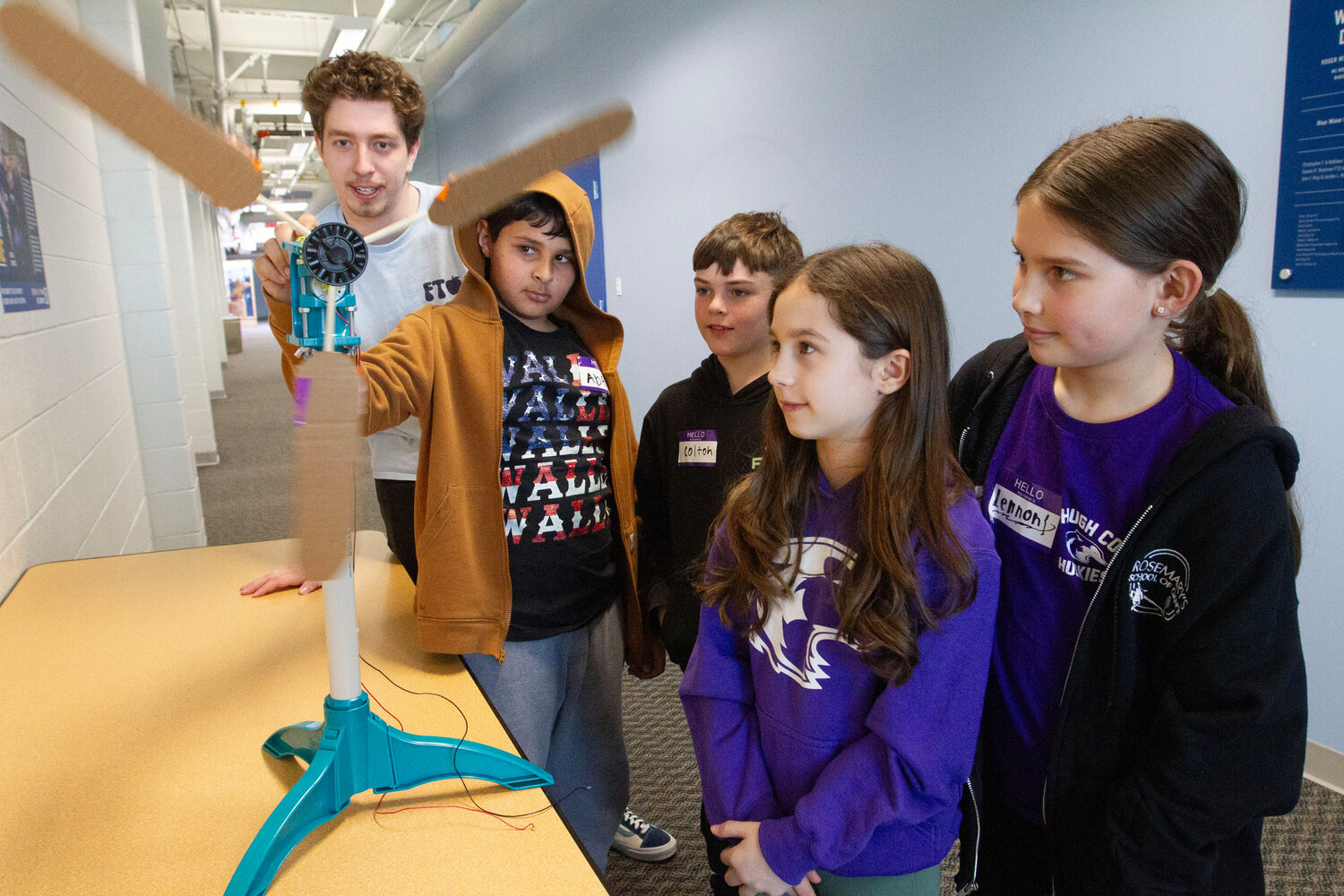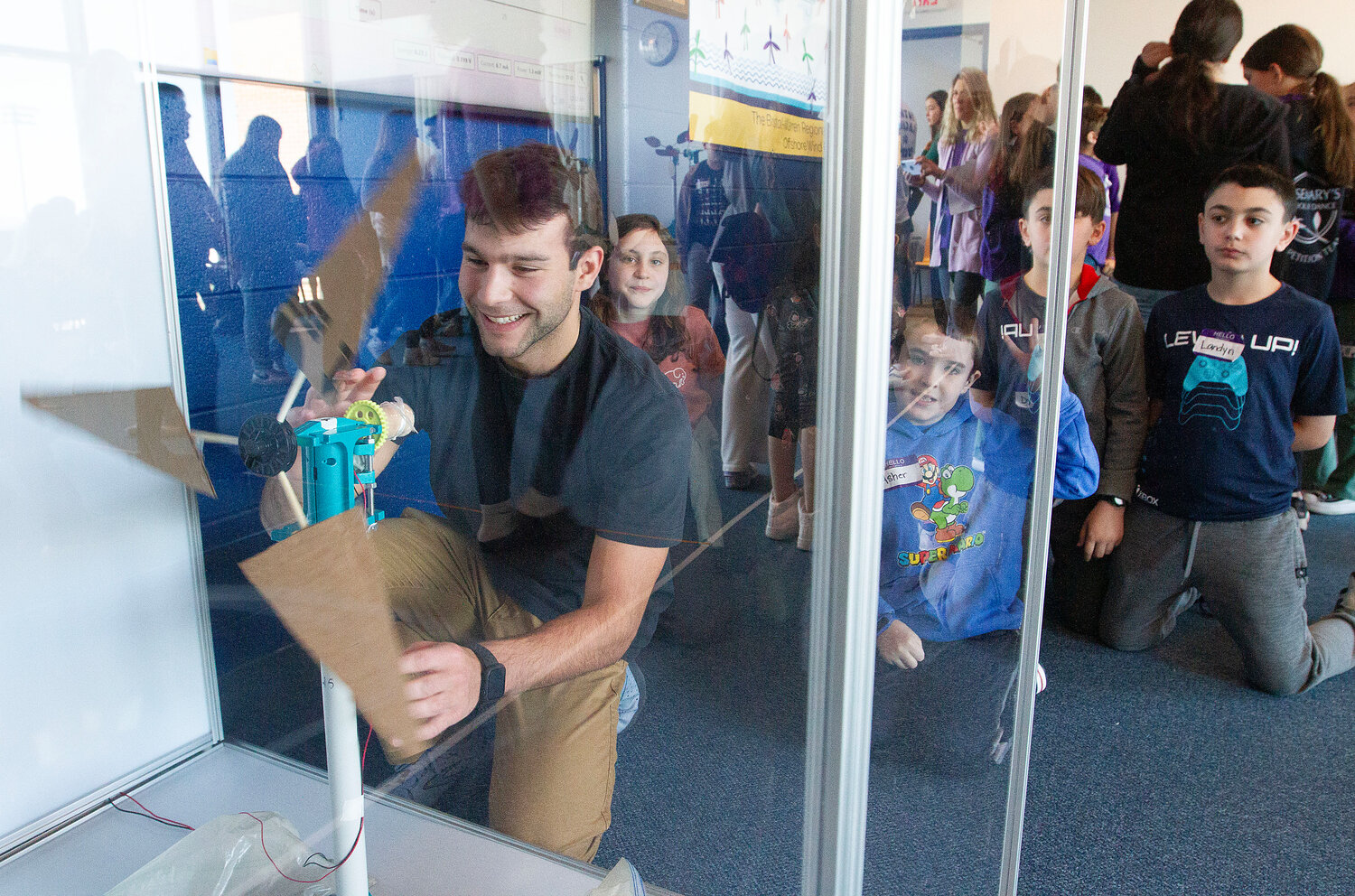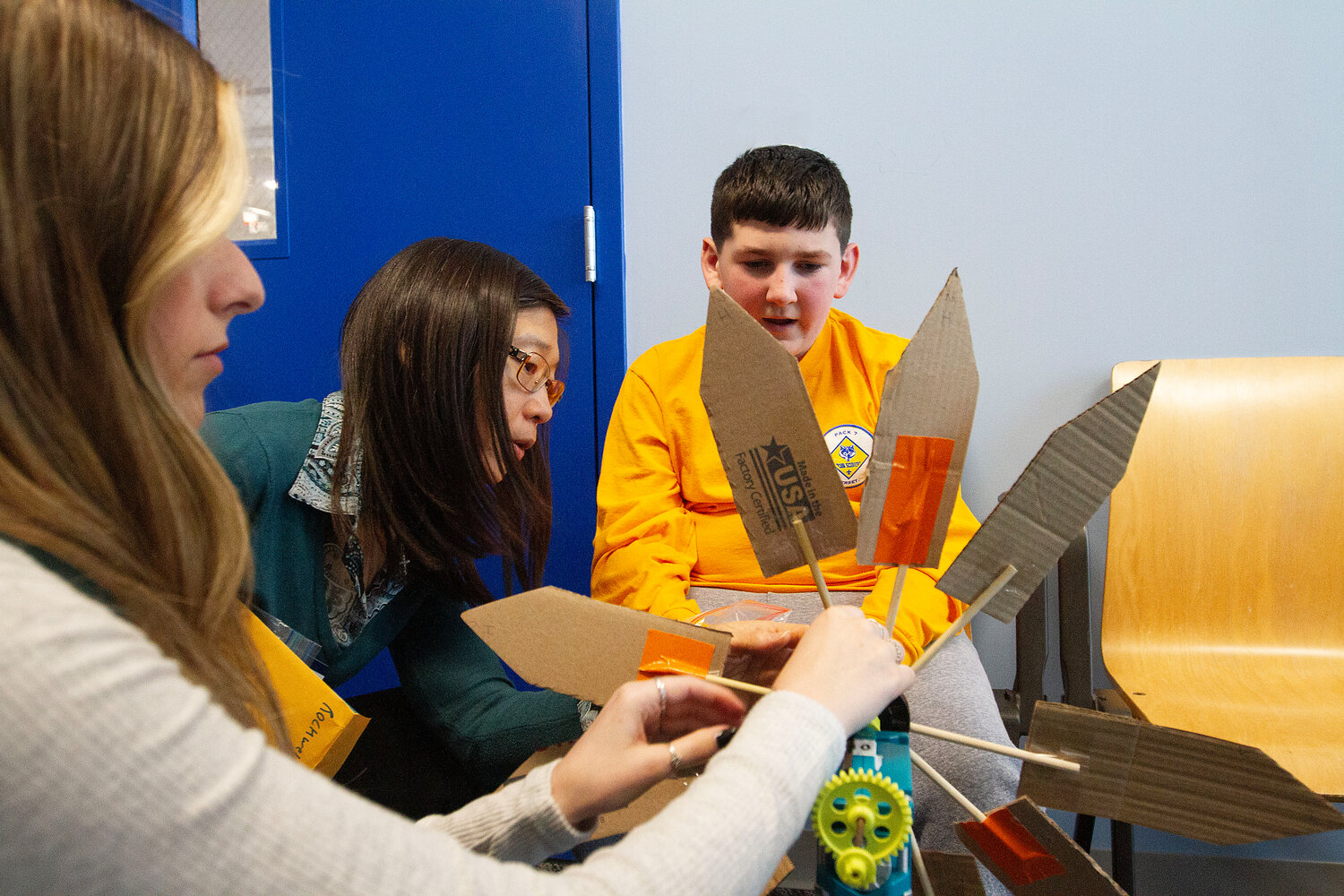RWU educational wind program has now reached over 1,000 local 4th graders
Now in its fifth year, KidWind has now reached more than 1,000 fourth graders who have learned from RWU engineering and education students.
This item is available in full to subscribers.
Please log in to continue |
Register to post eventsIf you'd like to post an event to our calendar, you can create a free account by clicking here. Note that free accounts do not have access to our subscriber-only content. |
Day pass subscribers
Are you a day pass subscriber who needs to log in? Click here to continue.
RWU educational wind program has now reached over 1,000 local 4th graders
This past Tuesday, 199 fourth grade students from the Bristol Warren Regional School District (BWRSD) enjoyed spending the day on the Roger Williams University campus for KidWind, a unique partnership in which RWU education and engineering students teach wind energy and the engineering design process to the visiting elementary students.
Now in its fifth year, KidWind has now reached more than 1,000 fourth graders who have learned from RWU engineering and education students.
This year, RWU received a $30,000 grant from the SouthCoast Wind Fund, which allowed them to expand research assistant opportunities to 10 students (while more are participating as course or project work) and to hire a graduate as the head research assistant.
The entire program included five weeks of classroom instruction where the younger students worked in small groups and learned how to build wind turbines before the main event at the RWU campus, which included putting their own wind turbines through a wind tunnel to test their energy output. In all, more than 50 turbines were built and tested.
Following the wind tunnel tests, students presented their turbine designs to a panel of experts, which included engineers from TPI Composites and SouthCoast Wind.
Maija Benitz, Associate Professor of Engineering, and Professor of Science Education Li-ling Yang are the two principal RWU faculty members behind KidWind. They conceived the program as a collaboration, as the education students have the expertise in building a curriculum, while engineering students have the expertise to build turbines.
KidWind links the students in Benitz’ Sustainable Energy Systems class with the students in Education Professor Li-ling Yang’s Teaching Inquiry Science in the Elementary School class. Joining forces in interdisciplinary groups, each team of University students were assigned to a team of students in each of the BWRSD fourth grade classrooms.
Since RWU doesn’t have graduate programs in either education or engineering, it’s the top of the undergraduate field who get the opportunity to serve as research assistants on KidWind.
“The research assistants review all of the lesson plans that our students create and they provide feedback, and then our students go out and teach those lessons while our research assistants have been going to the classrooms to observe and provide more feedback,” said Benitz.
For Benitz, one of the favorite parts of her day is watching the fourth graders present their turbines to the panel of professional engineers, noting that when she was an engineering student she would have been really nervous presenting before a panel of experts, but that the kids are so confident, and just march up to the tables to show off what they have made.
“This was definitely one of the best projects that I did at Roger Williams,” said Lauren MacDonald, a Mt. Hope graduate, Warren resident and RWU senior Education major who has participated in KidWind for two years, serving as a research assistant this year. “Being a research assistant and being able to work on my teaching expertise was really valuable…and I got to teach at my old elementary school last year, which was really special.”
Hailey Medeiros of Rehoboth is also a senior Education major who was a research assistant for this year’s event. She found participating in KidWind is really helping her prepare to transition to her chosen profession.
“It has prepared me for lesson planning and to stand in front of a class and give a lesson,” she said. “It has made me feel more comfortable in front of a class and it also really made me realize that this is something that I definitely want to do.”
In addition to the opportunity to test the wind turbines they made in class, the campus visit afforded students the opportunity to practice the engineering design process with additional hands-on activities, including designing and building a bridge out of paper and Hot Wheels cars, and designing and building a catapult from popsicle sticks and rubber bands.
The program also comes highly recommended by the younger set, students like Victor Schnuit of Bristol.
“We are having fun studying on how we can use the engineering design process for things like wind turbines and cars and even really tall towers,” he said. But his favorite part of the day? “Watching the red line go up, the amount of joules, the speed of wind made by the wind turbine.”
It’s all about the teamwork and collaboration for Peyton Hawkins, also from Bristol.
“It's really awesome because you need to have a team effort to see how fun it is to use wind energy and build stuff,” she said. “We work together to get new ideas.”











